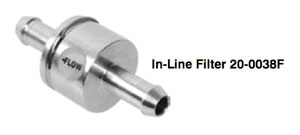Application:
All Power Steering equipped vehicles.
Problem:
After replacing power steering components, there is a lack of assist, intermittent assist problems or noisy operation.
Cause:
System not completely flushed of all debris and contamination.
Solution:
Time is money – that’s why there are so many of the new mechanical flush systems in use today. They are fast, efficient and labor saving. There are, however, still important advantages in flushing the system the old fashioned way, by rotating the pump and turning the steering wheel side-to-side. While mechanical flush systems get the job done, most simply pull the old fluid from the power steering pump reservoir (while sometimes using a cleaning agent) and then replace it with new fluid. The old-school method of cranking the engine to spin the pump while also turning the steering wheel is most effective, because it stirs up debris that needs to be flushed away. For additional information on this flushing method see ProTech PT 20-0012.

No matter what method you use to flush the system, always install an in-line filter and be sure to replace any hydraulic hose that is damaged or shows signs of age or failure. After flushing be sure to replace the fluid with OE approved or equivalent fluid. For hose recommendations see PT 20-0004, 0016. For filter options, refer to PT 20-0003. For information on fluids see PT 20-0027.
Note:
Please refer to your vehicle’s service manual for specific diagnostic instructions. This ProTech bulletin is supplied as technical information only and is not an authorization for repair.
Tech Tip courtesy of CARDONE Industries, Inc.













